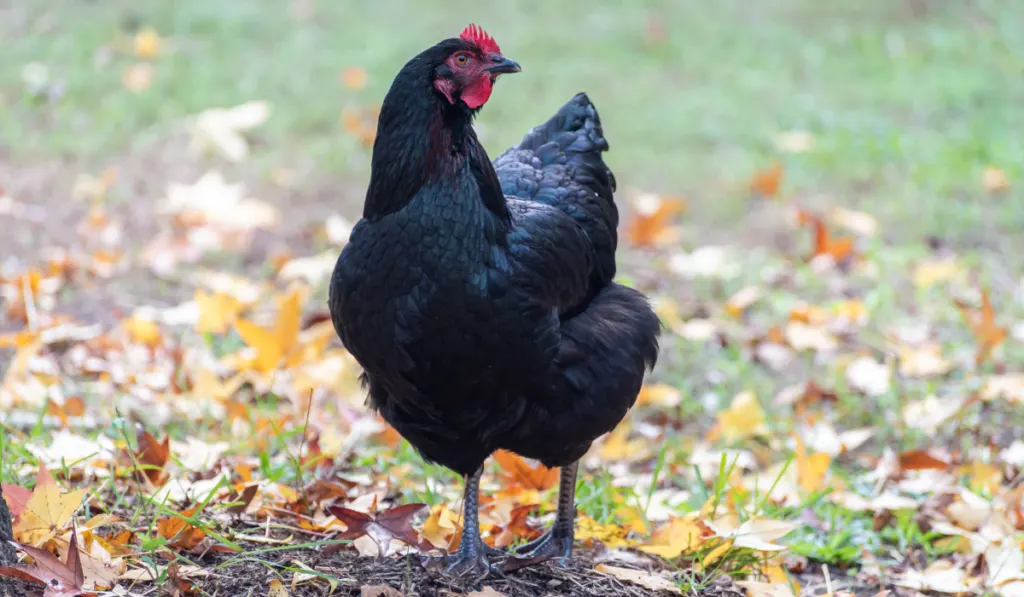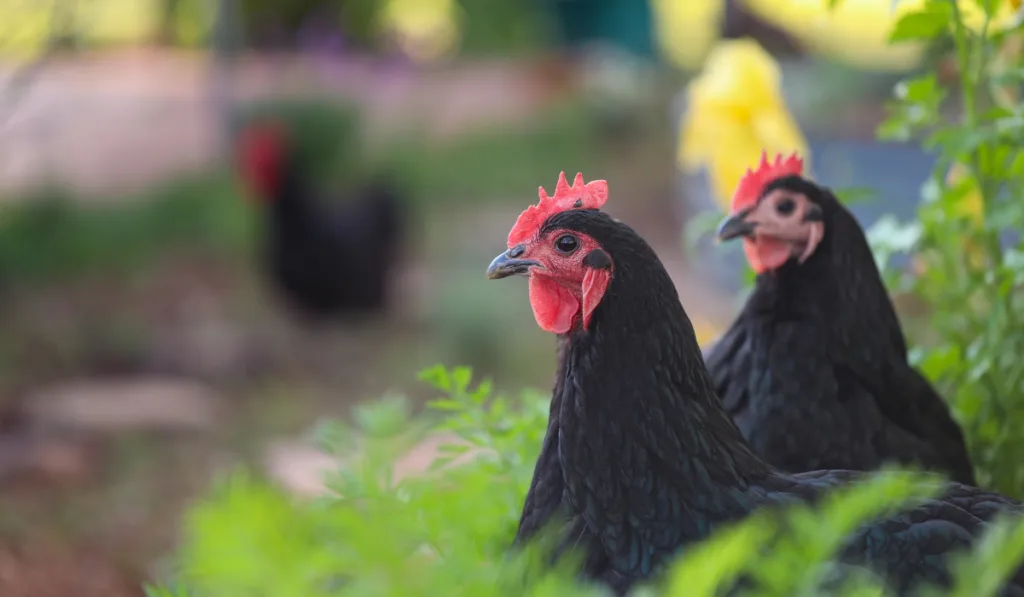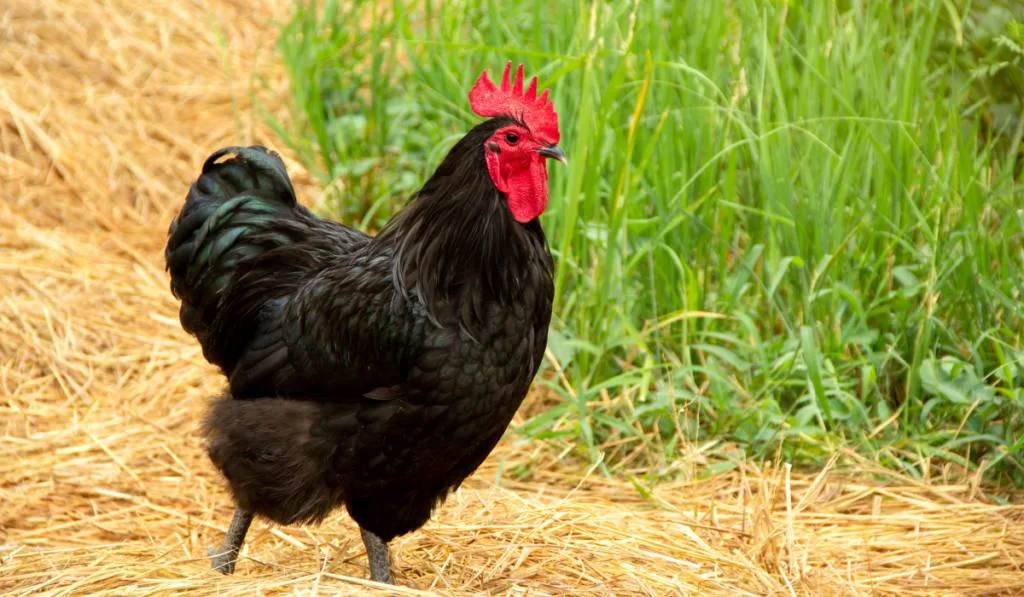When the Australorp was first bred, it came in the color black. However, since then, there have been other color varieties.
The Black Australorp has been around for a relatively short while. Yet, it has grown to become a favorite amongst backyard chicken keepers.

If the Black Australorp has been recommended to you, and you want to know if they’re worth it, we’ve got answers for you.
If you are also looking to just learn more about the breed, this article should help you out.
Table of Contents
History
The name Australorp is formed from a contraction of words Australian and Orpington; this basically summarizes the history of the Black Australorp breed.
After being created by William Cook, Orpingtons were imported into Australia from England in the early 1920s. When the chickens arrived in Australia, they were crossed with various other chicken breeds until the Australorp was formed.
Although Orpingtons were thriving as a dual-purpose breed in England, they were coveted for their large eggs in Australia. So, the goal of the breeders in Australia was to create another breed that would produce even more large eggs.
To this end, the Orpingtons were crossbred with Rhode Island Reds, Langshan, Minorca, and White Leghorn. There’s also the possibility that the Orpingtons were crossed with Plymouth Rocks.
The endpoint of these crossing efforts is the Black Australorp breed. You could say the efforts were successful because Australorps are more prolific at laying eggs than Orpingtons.
On average, Orpingtons lay around 200 eggs per year, but the productivity of the Australorps dwarf this rate.
Between 1922 and 1923, six Australorps were reported to have laid an average of 309.5 eggs per year. The year after, another Australorp hen laid 364 eggs within 365 days, averaging almost one egg per day.
The attractive egg-laying ability of this breed soon caught the eye of many poultry farmers, and they became interested in keeping Australorp chickens.
But around two decades later, the interest in Black Australorps waned after Austra Whites came to be.
The Austra Whites were relatively more productive, so the shift in interest was not surprising.
The reduced interest in Black Australorps may have contributed to their decline around the same period.
The good news is the breed is recovering the said decline. The laying ability of Black Australorps still remains topnotch, and poultry keepers still like them.
General Overview
Appearance
Black Australorps have black feathers, which give off a beetle-green sheen under sunlight, revealing their iridescence.
They have full breasts, high tails, and an upright stance.

The wattles, combs, and earlobes of a Black Australorp chicken should be red, with the comb staying upright and having 7 points at most.
Australorps have 4 toes on each one of their feet, and their featherless legs are typically black or blue.
Behavior
Black Australorps are very friendly chickens. They might be shy at first, but once they warm up to you, they make great pets even for children.
Black Australorp chickens love foraging; they go after insects and morsels they find as they range. But they cope well in confinement.
You should let the chickens range from time to time or they could become obese.
You may want to put some measures in place to keep them safe from predators as they range.
The measure you put in place depends on the type of predators you have around. But building a fence is a start.
Size and Weight
Black Australorps come in two size varieties: standard and bantam.
The standard varieties are heavy birds, with the roosters weighing between 8-10 pounds and the hens weighing 6-8 pounds.
The bantams are significantly smaller than the standard varieties. The bantam hens weigh 1.7-2.3 pounds, and the males weigh 2-2.7 pounds.
Health
Black Australorps have no major health issue. They are healthy, and on average, they should live 6-10 years.
While Australorps are heat-tolerant, you should still provide some shade for them. Compared to other breeds, they are more likely to get heatstroke.
Unlike many other breeds, Black Australorps are less likely to have deformities such as twisted beaks and bent toes if you take care of them well.
You should still pay attention to other minor health issues chickens experience, such as parasites.
Coop
As mentioned already, Black Australorps can thrive in confinement and in a free-range system.
If you intend to raise them in confinement, provide enough space to allow 4-5 square feet per chicken.
You may have to provide more space if you choose a free-range system.
Also, you should ensure the ranging area is protected against potential predators.
Breeding
Australorp chickens are very good at breeding. But if you keep an optimal ratio of roosters to hens, you are more likely to get eggs that produce chicks.
Keeping one rooster around ten hens should work out well.

Eggs
While the earlier Australorps did numbers in the 300s, the current average is not that high. Yet, Black Australorps are still prolific layers today.
On average, they lay about 250 light-brown eggs per year. So, you can expect about five eggs per week.
Of course, if Australorp chickens are given optimal feed and lighting, they can lay way above the stated average.
Compared to Orpingtons, Black Australorps are not very broody.
Color
Eggs from Australorps are usually brown to light-brown.
Size
Black Australorps lay medium-sized to large eggs.
Time to Lay
Compared to many other chicken breeds, Black Australorps are early birds. They start laying eggs as early as 16 weeks.
Where to Get Them
You can get Black Australorps from Meyer Hatchery, Chickens for Backyards, Cackle Hatchery, and Purely Poultry.
Cost
If you want a Black Australorp chicken, you may have to spend between $2-5.
Other Colors
Besides Black Australorps, the family has other colors, including blue, white, buff, golden, wheaten laced, and splash.
Of all the colors you can get Australorps in, the Black variety is the only one recognized by the American Poultry Association.
Resources
- https://www.thehappychickencoop.com/australorp-chickens-a-comprehensive-care-guide/
- https://www.roysfarm.com/black-australorp-chicken-farming/
- https://www.hobbyfarms.com/black-australorp-chicken-breed/
- https://meyerhatchery.com/productinfo.a5w?prodID=BLAS
